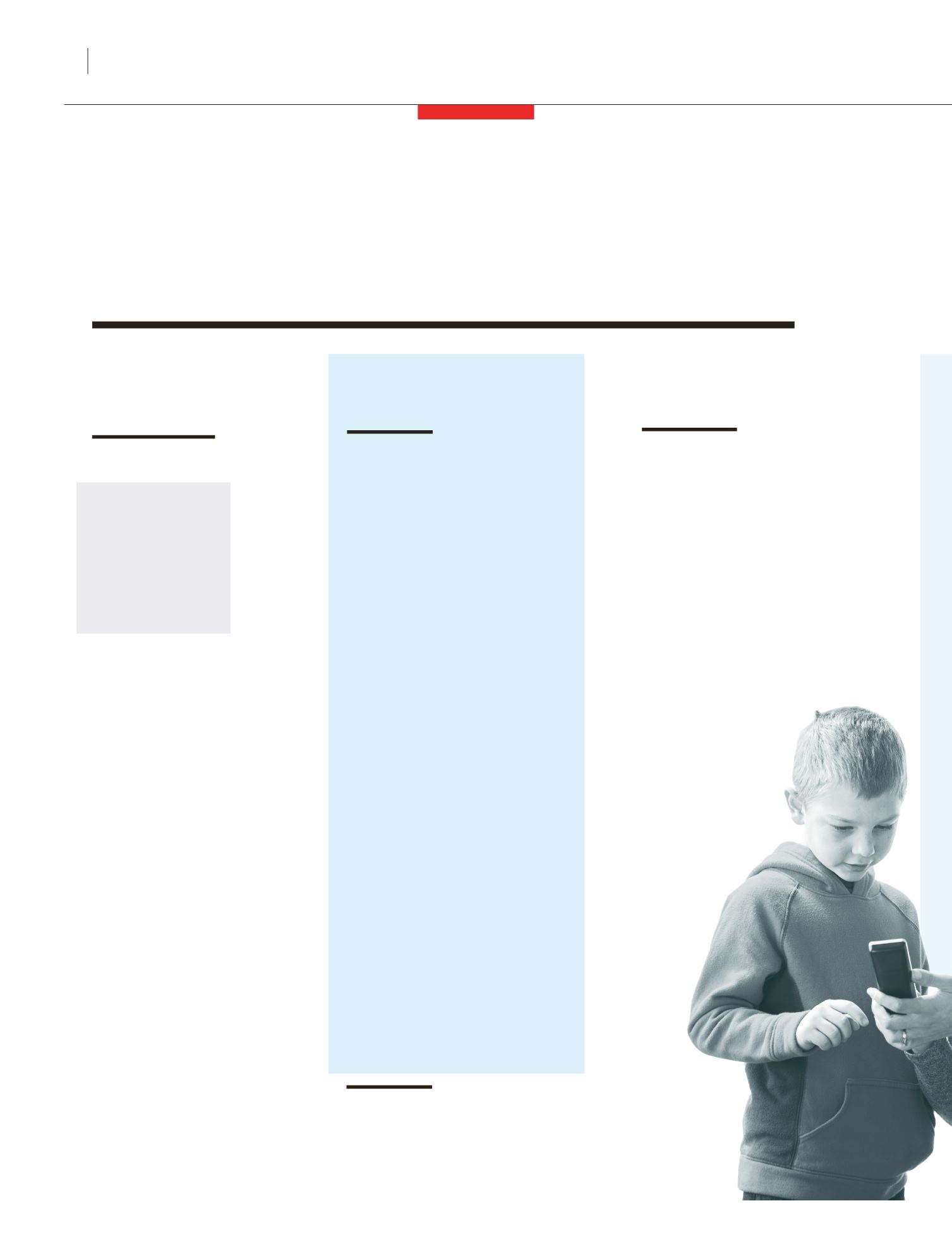

02
HOW TO
HELP YOUR
CHILD IN
THE ED
One of the best ways to help your child if he
or she has an emergency is to remain as calm
as possible and to provide reassurance. If you
lose control, your child’s anxiety will soar. And
that anxiety may even be worse than any pain
your child is experiencing.
You should also:
● ●
Tell your child what is happening in an
honest but age-appropriate way.
● ●
Comfort your child and let him or her
know that the doctors and nurses are there to
help—and that it’s OK for them to do so.
● ●
If you can, bring something with you that
your child loves, such as a favorite toy or
calming blanket.
● ●
Tell the doctor or nurse if your child is tak-
ing any medications or has any
allergies or past health prob-
lems or surgeries. Better yet,
keep a list of such infor-
mation with you so that it
can be readily and easily
shared.
● ●
Note the time your
child last ate food or had
anything to drink be-
sides water. The doc-
tors may need to
know this if your
child needs a
procedure or
medicines
that require
an empty
stomach.
In many emergencies, every minute counts. If you
wait too long to get help, a serious situation could
get a lot worse.
Of course, not all emergencies are as obvious
as when, for instance, someone stops breathing.
But if you think someone is in bad shape because
of an injury or illness—or could die—that’s an
emergency. Call 911 for help right away.
Here are some of the more common warning
signs and symptoms of an emergency:
● ●
Severe trouble breathing.
● ●
Chest pain.
● ●
Any sudden or severe pain, including arm or
jaw pain.
● ●
Heavy or uncontrolled bleeding.
● ●
Coughing up or vomiting blood.
● ●
Spine or neck injuries.
● ●
Severe burns or large or deep cuts.
● ●
Sudden confusion, severe headache, weakness
on one side of the body, or trouble speaking or
seeing.
● ●
Thoughts or threats of suicide or of hurting
someone else.
It’s hard for little ones to tell you when they’re
really sick. So if you’re the parent or caregiver of a
baby or young child, watch for any of these addi-
tional signs and symptoms of a child emergency:
● ●
Unusual behavior, such as being too sleepy,
hard to wake up or confused.
● ●
Seizures.
● ●
Severe or persistent vomiting or diarrhea.
● ●
A high fever with a headache and stiff neck.
● ●
Trouble standing or walking.
● ●
Skin or lips that turn bluish or gray.
● ●
Signs of dehydration—such as no wet dia-
pers for nearly a day, a dry mouth, no tears or a
sunken soft spot on a baby’s head.
● ●
Poor feeding or not eating.
01
WHEN IT’S AN
EMERGENCY
WHEN YOU CAN’T
BE THERE
A consent-to-treat form allows caregivers to get medical care
for your child when you’re not available. File a signed copy
with your child’s school, and give one to anyone who cares
for your child. Download forms at
emergencycareforyou.org.
Search for “organize medical information.”
American College of Emergency Physicians
T
The emergency
department (ED)—it’s
a place we all hope
we never have to go.
But should you ever
find yourself facing a
serious medical crisis, it’s
comforting to know the
ED is there for you and
your family, including
your kids.
Knowing a thing or
two about medical
emergencies—from how
to spot one, to how to
help make your visit to
the ED better—can go a
long way toward making
what's often a scary situ-
ation for your family less
stressful. Here are three
key things to understand
about emergencies.
Medical
3 THINGS YOU
MIGHT NOT
KNOW—BUT
SHOULD
emergencies
4
THE SAMARITAN
Emergency medicine
















